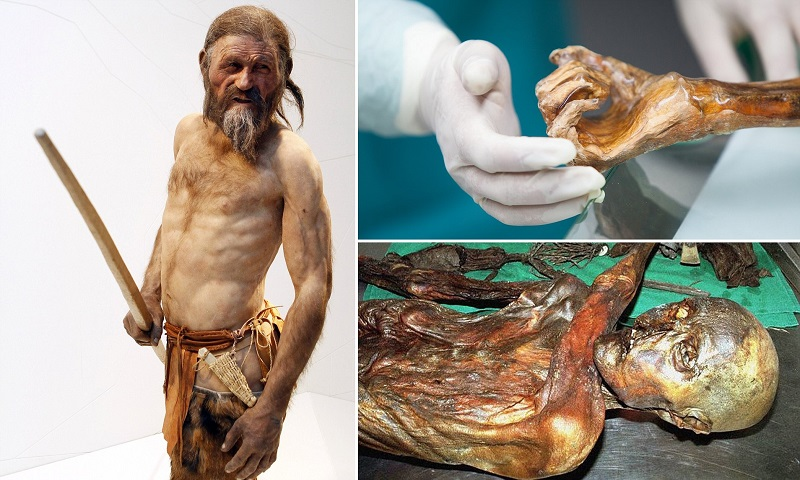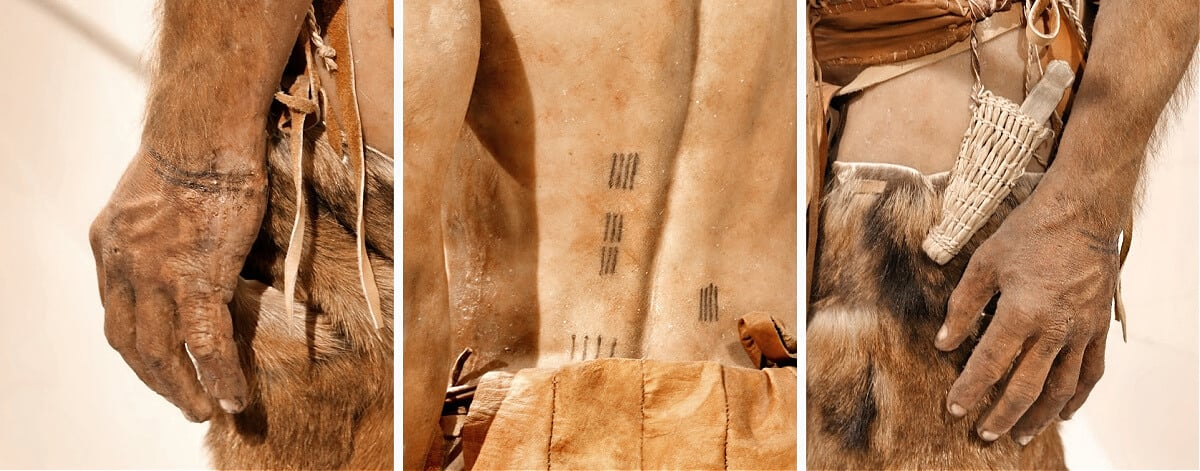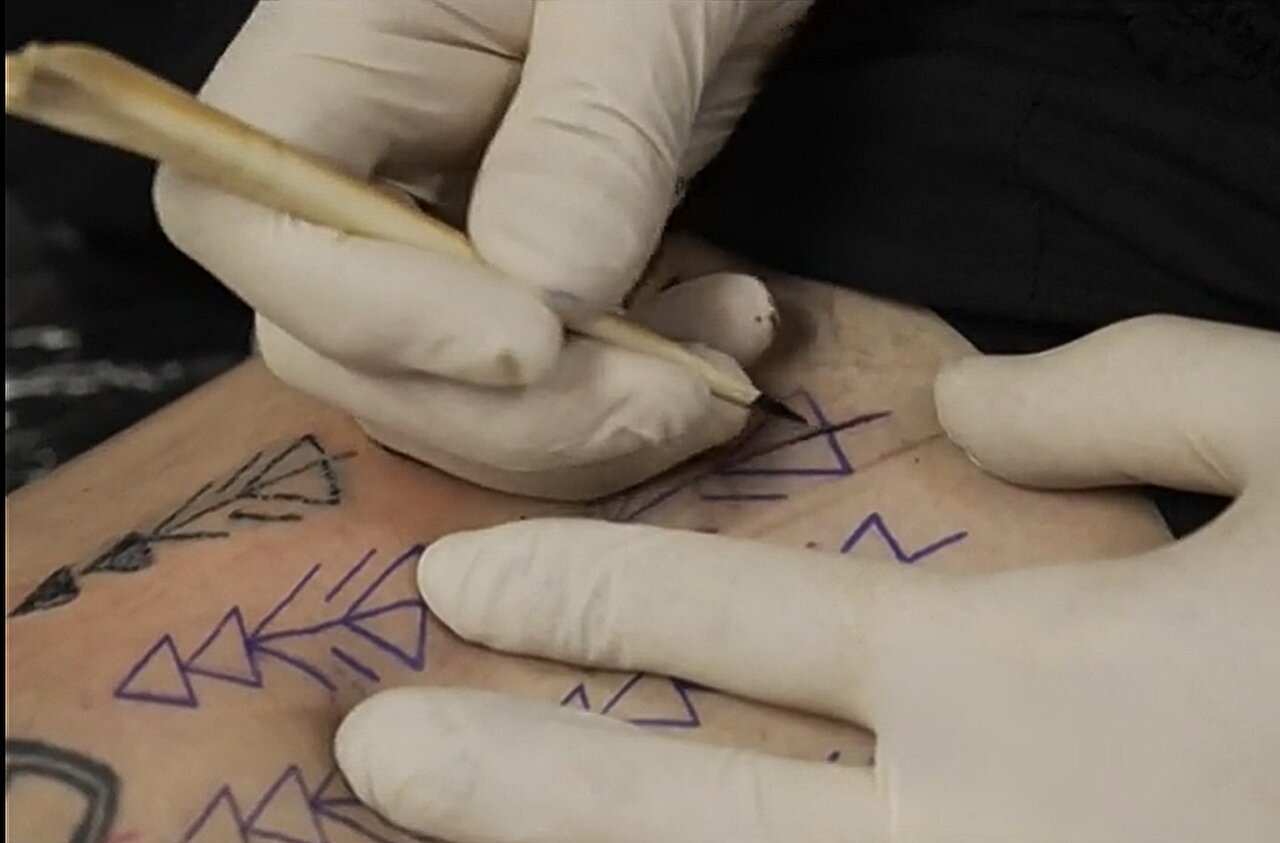Unraveling the mystery behind Ötzi the Iceman's ancient tattoos has long captivated both scientists and historians.
Discovered remarkably preserved in the Italian Alps in 1991, Ötzi's body showcased an intricate array of tattoos adorning his lower back, abdomen, legs, and wrist.
The origin and technique of these tattoos have been subjects of fervent debate and speculation.
Ötzi the Iceman tattoos
Initially, various methods were proposed, ranging from hand poking to subdermal tattooing, hand tapping, and incision, each rooted in its own historical context, adding layers of intrigue to the investigation.
In a groundbreaking study published in the European Journal of Archaeology, an international team, comprising archaeologists, historians, and tattoo artists, embarked on a unique endeavor to unlock the secrets of Ötzi's tattoos.
Their innovative approach involved replicating Ötzi's tattoos on modern skin using each of the proposed methods, providing a tangible insight into ancient tattooing practices.
A tattoo artist volunteered to receive tattoos on his leg, mirroring Ötzi's patterns, employing the four different techniques.
Following the healing process, meticulous comparisons were drawn between the newly created tattoos and Ötzi's ancient markings.
This shows tattoo artist Danny Riday tattooing his own leg using a bone awl made from white-tailed deer (Odocoileus virginianus). This variety of puncture tattooing, colloquially known as "hand poke" or "stick and poke" tattooing, involves the use of a sharp implement either held directly in the hand or hafted to the end of a handle. Credit: European Journal of Archaeology (2024). DOI: 10.1017/eaa.2024.5
The study revealed that tattoos created through the hand-poking method bore the closest resemblance to Ötzi's tattoos. This technique entails using a sharpened stick dipped in ink to pierce the skin, depositing ink with each puncture, resulting in a series of tiny, overlapping disks of ink under the skin.
The precise pattern observed matched Ötzi's tattoos, offering compelling evidence that hand-poking was the preferred method thousands of years ago.
This research not only sheds light on Ötzi's tattooing practices but also underscores the skill and artistry of ancient tattoo artists.
Their adeptness in creating enduring body art with rudimentary tools speaks volumes about the cultural richness of the past.
As we delve deeper into Ötzi's story, we glean invaluable insights into the lives, beliefs, and challenges of ancient societies, enriching our understanding of human history.
The research findings can be found in European Journal of Archaeology.









